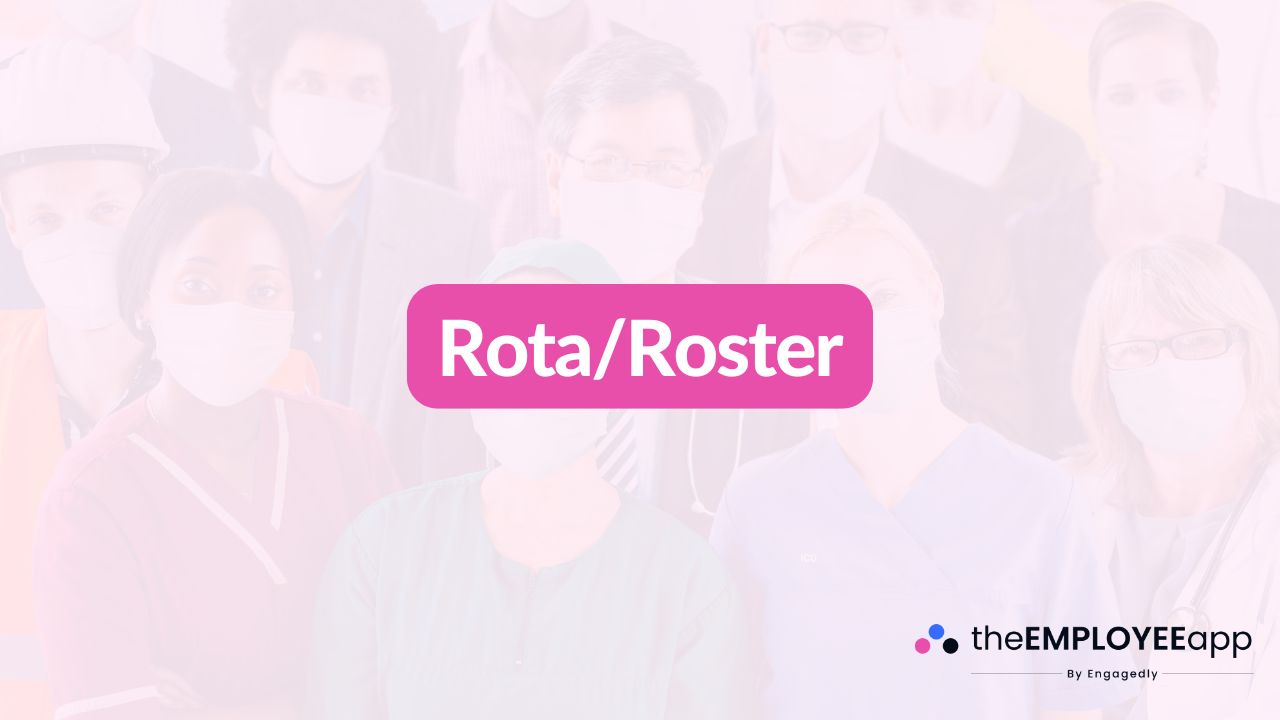
Introduction
A rota or roster is a scheduling tool used by organizations to assign employees to specific shifts, tasks, or work locations over a defined period. Commonly used in industries like retail, hospitality, healthcare, and logistics, a rota provides a clear plan of who is working, when, and where. Having an effective rota system ensures that staffing levels meet business needs, while also balancing employee preferences and legal requirements.
What Is a Rota or Roster?
The terms “rota” and “roster” are often used interchangeably, depending on regional preferences. Both refer to a structured timetable that lists employees’ working hours and responsibilities. A typical rota may cover daily, weekly, or monthly schedules and often includes details such as start times, end times, break periods, and shift rotations.
For example, in a hospital, a rota ensures that enough nurses and doctors are scheduled across day, evening, and night shifts. In a restaurant, a roster helps balance peak demand by scheduling additional staff during busy dining hours while reducing coverage during slower times.
Why Rotas Are Important
Rotas are essential for workforce scheduling because they provide structure and predictability. They ensure that the right number of staff are always present to handle customer demand or operational requirements. Without a proper rota, businesses risk being understaffed during peak hours or overspending on unnecessary labor costs.
For employees, a clear rota helps with planning personal commitments, ensuring they know their working hours in advance. This leads to better work-life balance and improved job satisfaction.
Types of Rotas
Different organizations use different rota structures depending on their workforce needs. Common types include:
Fixed rota: Employees work the same hours and days consistently each week.
Rotating rota: Shifts alternate between different times, such as day, evening, and night.
Flexible rota: Hours are adjusted week by week based on demand or employee availability.
Split rota: A single shift is broken into two parts, such as working in the morning and evening with a long break in between.
Each type serves a purpose and can be combined depending on the industry and staffing requirements.
Benefits of a Well-Managed Rota
An effective rota provides multiple benefits for both employers and employees.
For employers, rotas reduce scheduling conflicts, ensure compliance with labor laws, and make it easier to manage overtime or holiday coverage. With digital tools, rotas can be updated in real time, helping managers respond quickly to last-minute changes.
For employees, a transparent rota system promotes fairness by showing exactly how shifts are distributed. This prevents favoritism and helps employees feel more valued. Additionally, access to digital rosters through apps or portals allows employees to view their schedules anytime and anywhere.
Challenges of Rota Management
Despite their advantages, rotas can be challenging to manage, especially in large organizations or industries with unpredictable staffing needs. Last-minute changes, absenteeism, and employee preferences can make scheduling complex. Manual methods such as spreadsheets often lead to errors, miscommunication, or duplication of work.
Employers must also ensure compliance with labor laws, such as limits on working hours and minimum rest periods. Failing to manage these correctly can result in legal risks and employee dissatisfaction.
Best Practices for Creating a Rota
To build an effective rota, organizations should follow best practices:
Plan in advance: Publish rotas early to give employees enough time to adjust their personal schedules.
Use technology: Workforce scheduling software reduces errors, saves time, and allows for real-time updates.
Be transparent: Clearly communicate how shifts are assigned to maintain fairness and trust.
Balance needs: Consider both operational requirements and employee preferences to boost engagement.
Monitor performance: Regularly review the rota’s effectiveness and make adjustments as needed.
The Future of Rota and Roster Management
As workplaces evolve, digital tools are transforming how rotas are managed. Mobile apps now allow employees to swap shifts, request time off, and receive instant notifications about schedule changes. Predictive scheduling is also on the rise, helping businesses forecast staffing needs based on historical data and demand trends.
This shift toward smarter, tech-driven rota management not only improves efficiency but also enhances employee satisfaction by providing more flexibility and transparency.
Conclusion
A rota or roster is a fundamental part of workforce scheduling that ensures businesses are staffed appropriately while supporting employees with clear and fair work schedules. By embracing digital tools and best practices, organizations can streamline the process, reduce conflicts, and build a workplace culture that values both efficiency and employee well-being.
